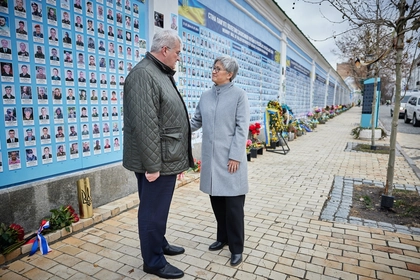Kremlin has nuclear capable missiles in Kaliningrad less than 600 kilometers (375 miles) from Berlin, according to Bild quoting German Foreign Minister Annalena Baerbock.
“Russia has long been preparing for this war [in Ukraine]. For many years, it initially violated and then tore up disarmament treaties. The banned weapons developed can be equipped with nuclear warheads. They have been installed in Kaliningrad, less than 600 kilometers from Berlin. On Feb 24, 2022, Putin's Russia began the largest war in Europe since 1945," Baerbock said.
JOIN US ON TELEGRAM
Follow our coverage of the war on the @Kyivpost_official.
According to her, Germany must invest in its “own security and strength,” which includes decisions on deploying long-range US weapon systems.
“We need a reliable deterrent against Russia," Baerbock said, adding that this will also help protect partners directly bordering Russia and witnessing hybrid activities at the border in recent months – including Poland, the Baltic states, and Finland.
The siting of these weapons in Europe is supposedly controlled by the intermediate-range nuclear forces (INF) Treaty which was signed between the US and the Soviet Union in 1987. It was intended to limit the deployment of nuclear-capable weapons with ranges of between 500 and 5,500 kilometers (312 and 3430 miles).
In February 2019 the US administration under Donald Trump suspended participation in the treaty, citing the development of prohibited missiles by Russia leading Russia’s President Vladimir Putin to claim that deployment of US antiballistic missile defense systems in Europe also represented a breach of the treaty .

Australian Foreign Minister Visits Kyiv, Confirms Reopening of Embassy
The US has said that in 2026, it will begin to periodically deploy long-range weapons from its multifunctional operational group in Germany as part of a plan for long-term deployment. Once developed, these systems will include SM-6 missiles, Tomahawks, and new hypersonic weapons with a greater range than current Europe-based ground systems. The use of these advanced technologies will demonstrate the US commitment to NATO and its contribution to European defense.
You can also highlight the text and press Ctrl + Enter






